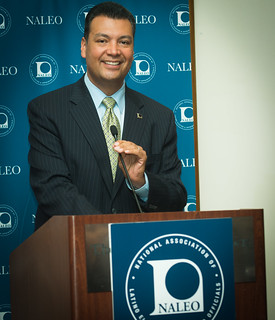( – promoted by Brian Leubitz)
[Even though I was planning to take a break from blogging for a while, something has been nagging me at the back of my mind about Six Californias. Since a brief email exchange I had with Mr. Draper indicates he may try again – which is why I have “Is” in the title – I decided I should post my concerns.]
According to the story of the Trojan Horse, the Greek army wanted to invade Troy but couldn’t breach Troy’s well-defended walls. So they pretended to give up, and built a giant wooden horse as an appeasement gift. The Trojans saw the Greeks sail away, leaving the wooden horse just outside the walls, so in their joy at their apparent victory the Trojans opened their gates and brought the horse inside.
Unbeknownst to the Trojans, the Greeks had left a small band of their best soldiers inside the horse. In the middle of the night, as the Trojans, exhausted from their day-long victory celebration, slept soundly, the Greeks left the horse via a trap door and opened the gates so that the rest of the Greek army, which had sailed back, could enter Troy and take the city.
Thus the expression “Trojan Horse” refers to anything that looks attractive but has something malevolent buried inside.
(The incident also gave birth to that other expression, “Beware of Greeks bearing gifts.” However, it is not related to the expression “Never look a gift horse in the mouth“; that has a different origin.)
Attractive free software that contains malware is a modern-day example of a Trojan Horse. But so are initiatives that seem to do one thing but have something else buried inside of them.
I’m referring to Section 4 of Six Californias, that would add Section 4.5 to Article XI of the California Constitution:
SECTION 4. COUNTY AND REGIONAL POWER DURING INTERIM PERIOD OF TRANSFORMATION
Article XI of the California Constitution is amended to add section 4.5 to read:Sec. 4.5(a) Upon enactment of this section, it shall be competent in any county charter to provide that the county governed thereunder may make and enforce all ordinances and regulations in respect to municipal affairs, subject only to restrictions and limitations provided in their several charters and in respect to other matters they shall be subject to general laws. County charters adopted pursuant to this Constitution shall supersede any existing charter, and with respect to municipal affairs shall supersede all laws inconsistent therewith.
(b) A county charter may provide for the delegation of authority in respect to municipal affairs, by way of compact, or other agreement, to a regional association of counties, consisting of the other counties within the boundaries of the new states provided for in section 2.5 of Article II, during the interim period of time before Congressional approval of the new states.
(c) For purposes of this section, any law intended by the Legislature to be a general law or matter of statewide concern that supersedes the authority of a county over its municipal affairs and also requires an annual subvention of funds to reimburse the county for the costs of the program or service pursuant to section 6 of Article XIIIB, shall require an annual transfer of funds from the state treasury to a county treasury, as needed, and in the absence of such reimbursement, the county shall have no obligation to enforce the law. The state shall have no power to incur debt owed to a county pursuant to this subdivision.
This amendment to California’s Constitution would have gone into effect if Six Californias had made it to the ballot and was passed by the voters, and would have remained in effect even if Congress never approved the division of California into six new states. I suppose one could call it the initiative’s “Plan B”, but since (as far as I can tell) most political observers expect that Congress would never approve of such a division (and Mr. Draper must know that) perhaps it is the initiative’s true “Plan A”?
I do note that the initiative is upfront about Section 4; Section 2(A)(5) even says one purpose is to “Provide interim relief to the people by empowering local government and promoting regional cooperation in recognition of the new states proposed herein.”. But note its use of the word “interim”, implying something temporary, not permanent. In some sense Section 4 is “hiding in plain sight“, and for that reason the initiative may have been a Trojan Horse.
After all, a ballot measure to establish regional governments, or at least allow for them, is pretty boring. It’d be hard to get people to sign such a petition, and it’s so wonky that it might be difficult to get people to vote for it. But a measure to divide the state six ways, now that’s sexy! That will generate buzz, and no one will notice the wonky little provision tucked into the fine print.
Note that I am not taking a position on the merits of the proposed Section 4.5 of Article XI. Perhaps it would be good for California, perhaps not. But I’m sure that, if Six Californias or a future incarnation of it appeared on the ballot, most if not all of the media attention would be given to the debate about the division into six states, and little or none would be given to the implications and lasting effects of Section 4.5 of Article XI. And that does make me suspicious of it.
–Steve Chessin
President, Californians for Electoral Reform (CfER)
www.cfer.org
The opinions expressed here are my own and not necessarily those of CfER.

